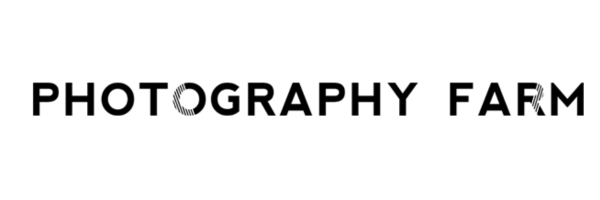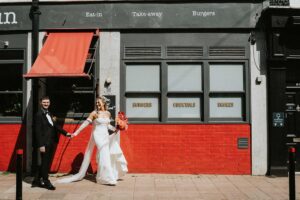Tips On Culling Wedding Photos
Tips On Culling Wedding Photos
Culling wedding photos might not be the most glamorous part of the job, but it’s one of the most essential. With digital photography, we have the luxury and the curse of virtually limitless storage. It’s easy to walk away from a wedding with thousands of images. On average, I shoot around 3,500 photos at a wedding, and if I have a second shooter, that number climbs to about 5,000. But I aim to send around 800-1,000 final images.
A large part of your role is to edit the photos, including getting them down to a manageable number. Too many images can dilute the impact of your best work and feel overwhelming for couples. A carefully curated gallery is a more enjoyable, more emotional, and a more valuable experience.
Let’s look at Tips On Culling Wedding Photos

Start Your Cull Outside Lightroom
Although Lightroom is the main software I use for editing, I don’t start my cull there. Instead, I use external tools that work with the JPG previews embedded in raw files. The benefit is speed: you don’t need to import or load full raw files just to decide what stays and what goes. Plus, it keeps your storage down.
For years, Photo Mechanic was the industry go-to, but now we’ve got AI tools that speed things up even further.
AI Culling Options
Apps like Imagen, Narrative, and Aftershoot offer AI-powered culling that reviews your images and flags the best ones based on sharpness, expressions, eyes open, and other criteria.
I use Narrative Select and although it can auto-select the best images, I still review every one myself – it doesn’t know if I’ve shot something deliberately out of focus or created a happy accident that could be a keeper. But I do pay attention to the ratings and warnings it gives me. It’s particularly handy for things like group shots – it pulls out the best frames where everyone has their eyes open, saving me time and guesswork.
Benefits of AI Culling:
- Speed: Cut down hours of sorting.
- Accuracy: Flags the strongest images automatically.
Focus: Lets you concentrate on creative decisions rather than tech ones.



My First Pass: Yes, No, Maybe
Here’s the system I use for my first cull:
- Yes = Keep it.
- No = Bin it.
- Maybe = Also bin it.
Sounds harsh, but if you’ve shot thousands of images, you’ll have more than enough without holding onto “maybes.” If something needs work to be usable, it probably isn’t worth your time.
Once I’ve culled the images down to just the ‘Yes’ pile, I import those into Lightroom.
Second Cull: The Storytelling Sweep
Now I have all the technically good images, but there are still too many. So I go full screen in Library Mode, image by image, and make a second pass – this time thinking about:
- Redundancy: What images are not adding to the story?
- Sequence: How does the gallery flow?
- Aesthetics: Are there stronger versions of the same setup?
For example, if I photographed the reception room before and after the candles were lit, I’ll usually keep the candle-lit versions – they’ll be more atmospheric and emotionally resonant.
Final Gallery Polish
Once I’ve got a tighter story, I do a quick Library Mode grid-view scan for clusters of similar images I might have missed, and trim down again.
Then it’s off to Imagen for editing. Since Imagen charges per photo, I now ask myself:
“Do I want to pay to edit this image?” That alone cuts a few more out.
When the edits come back, I do a final run-through:
- Make tweaks
- Convert some images to black and white
- Ditch any frames that now I’ve had a little time away from the images, feel unnecessary
At the end of all this, I’m usually left with around 800-1,000 images ready to upload to my online gallery.

The Proofing Stage
Here’s something that’s helped me and my clients over the years: once their gallery is live, I let them know they can hide any images they don’t want to see or share. I call this the “Over To You” stage and I think of it as the digital proofing process.
Commercial photography has always had a ‘proofing stage’. As photographers, we deliver a curated collection that’s still generous enough to give clients options, but we don’t dictate the final image selections. Giving couples the agency to control what appears in their galleries means they can remove anything they feel awkward about or simply don’t like.
In wedding photography, the clients are also the subjects. They will have feelings about themselves in photos that we can’t always predict. I’ve found that the images chosen for albums are rarely the ones I would have picked as the best, and that’s absolutely fine.
Empowering clients at this final stage makes the experience more collaborative and manages expectations. It’s almost like permitting them to not like every single photo.
Culling Tips from the Photography Farm Community
We asked our Farm community for their best advice on culling wedding photos and they delivered.
- Start during the wedding. “When the meal is being served and there’s downtime, I start the cull right there on my laptop. It makes the post-wedding workflow feel far less daunting.” Jo Greenfield
- Give yourself deadlines. “Break it down and stay accountable. For example: aim to cull 50% of the gallery by a set time or day.” Sally Rawlins
- Cull while it’s fresh “Always cull as soon as possible. When the wedding is fresh in your mind, you can remember what it felt like and that helps you tell the story better.” Chloe Mary
- Curate Not Cull “I now call it curating rather than culling. It’s a small change word-wise, but makes a real difference for me as I go through a reminder that I’m curating their story instead of killing off images.” Jo Donaldson
Culling Hack: Use a Game Controller
If culling feels like a slog (and let’s face it, sometimes it does), get yourself a game controller. Yes, really.
You can map the buttons using software like Joystick Mapper and use it to fly through your first cull. It speeds things up and makes the process less like a repetitive task and more like – well, a game.
Check out this YouTube tutorial by Farmer James Pearce to see how to set it up. Bonus: they come in cute colours, like pastel pink.
Final Thoughts
I know this is not the most exciting part of being a wedding photographer but at a recent wedding, one of the guests chatted to me about the experience of recently receiving his own wedding gallery. There were 1600+ photos and he said they just found it a chore in the end to go through them all.
This is not the end result you want after all the effort that you’ve put in. Culling wedding photos is about more than just trimming numbers; it’s about crafting a gallery that reflects the wedding day with clarity and care. A good cull creates space for emotion, storytelling, and impact.
Whether you’re using AI tools or just your own gut instincts, the key is to keep the client experience front and centre. Cull with confidence, and you’ll deliver galleries that feel purposeful and a joy to go through, not like a work task.
You can see me cull and edit a wedding in a day in this class – 1-Day Wedding Edit – which is available either on its own or inside our Barn membership.

IMAGES: Lisa Devlin
Edit 1500 images for free with Imagen,
Get 10% off Narrative Select
15% off Aftershoot with code PHOTOGRAPHYFARM15
(Affiliate Links)







